How to Brew the Best French Press Coffee Ratio!
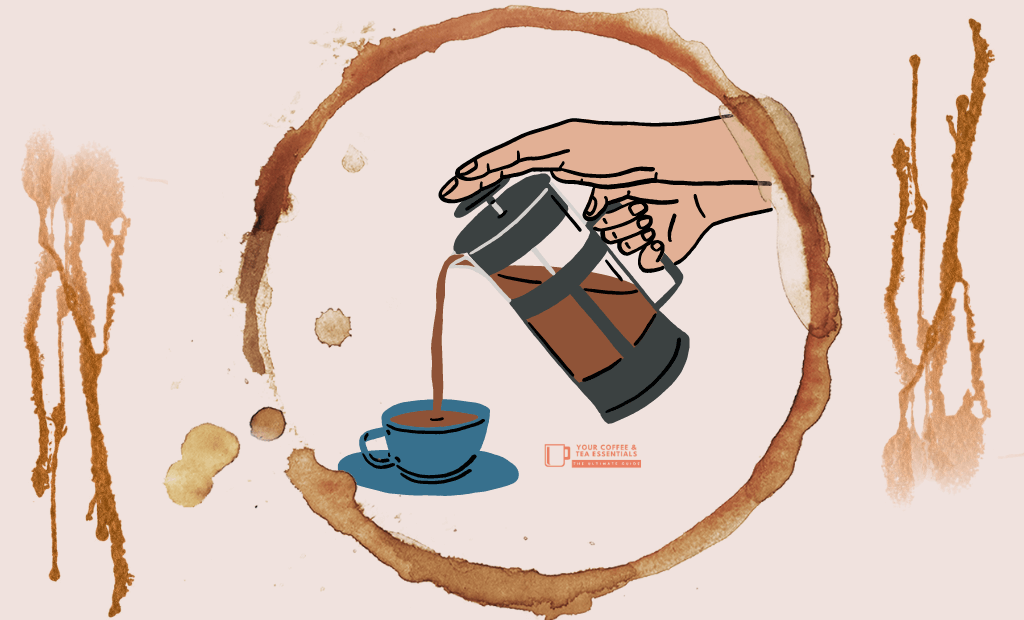
This detailed guide will cover the ideal French Press coffee ratio and how to brew the perfect cup consistently!
In the world of coffee brewing, the French Press method stands out for its simplicity and ability to deliver a rich and full-bodied cup of joe.
But what truly sets it apart is the careful balance of coffee grounds and water, known as the French Press coffee ratio. This vital factor determines the strength and flavor profile of your brew.
In this article, we explore the basics of the French Press, including the type of coffee it produces, as well as recommended ratios for brewing French Press coffee.
Prepare to unlock the secrets behind the perfect French Press coffee.
What is French Press Coffee?
The French Press, also known as a coffee press, coffee plunger, and press pot, is a brewing method that produces a robust and full-bodied cup of coffee. It involves steeping ground coffee in hot water and then pressing a plunger to separate the coffee liquid from the grounds.
The French Press is a simple and elegant coffee maker consisting of a glass or stainless steel cylinder with a mesh plunger and a lid.
The ground coffee is placed at the bottom of the cylinder, then hot water is poured on top, and after a few minutes of steeping, the plunger is pressed down to separate the coffee grounds from the liquid.
The history of the French Press dates back to the late 19th century. In 1852, two Frenchmen by the names of Henri-Otto Mayer and Jacques-Victor Delforge, created and patented a rudimentary version of what we now refer to as a French Press.
While the exact origins are disputed, it is commonly believed that two Italians named Attilio Calimani and Giulio Moneta invented the modern-day French Press in 1929 (1). This model more closely resembles the device used today.
However, it wasn't until the 1950s that the design was refined and popularized by a Swiss man named Faliero Bondanini, who was relatively well-known in France. Since then, the French Press has gained worldwide recognition as a popular coffee brewing method.
Whether the French Press is really more Italian or Swiss than it is French… we may never know. But the coffee it makes sure is delicious!
French Press Coffee to Water Ratio
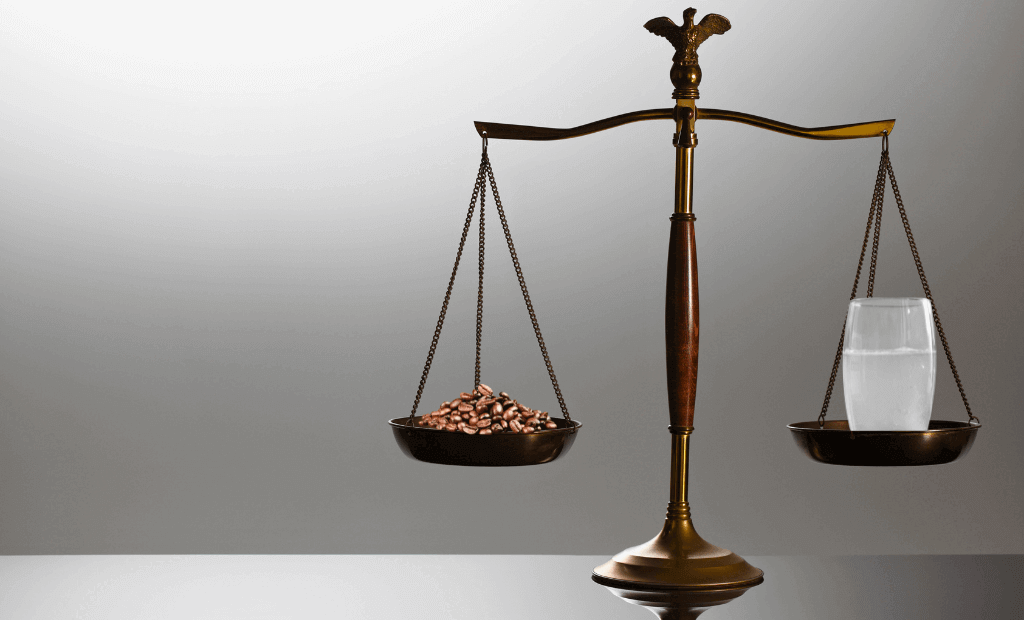
Before continuing any further: If you are wondering how much coffee to use when brewing French Press coffee, I recommend using a coffee-to-water ratio of 1:13.
The first number refers to the amount of coffee, while the second refers to the amount of water. This translates to 1 gram of ground coffee per 13 grams of water.
Simply put, use 30 grams of ground coffee with about 400 grams (mL) of water, a great amount for two cups of coffee to start the day off right!
Of course, depending on how you like your brew strength, change this ratio. Use the table below as your personal cheat sheet. Half the amount of coffee and water if you only want to make one cup of coffee. There’s no more guessing how much coffee you need!
| Brew Strength | Coffee to Water Ratio | Coffee (grams) | Water (mL) |
| Light | 1:16 | 25 | 400 |
| Standard | 1:13 | 30 | 400 |
| Strong | 1:10 | 40 | 400 |
Best Way to Measure the French Press Coffee Ratio
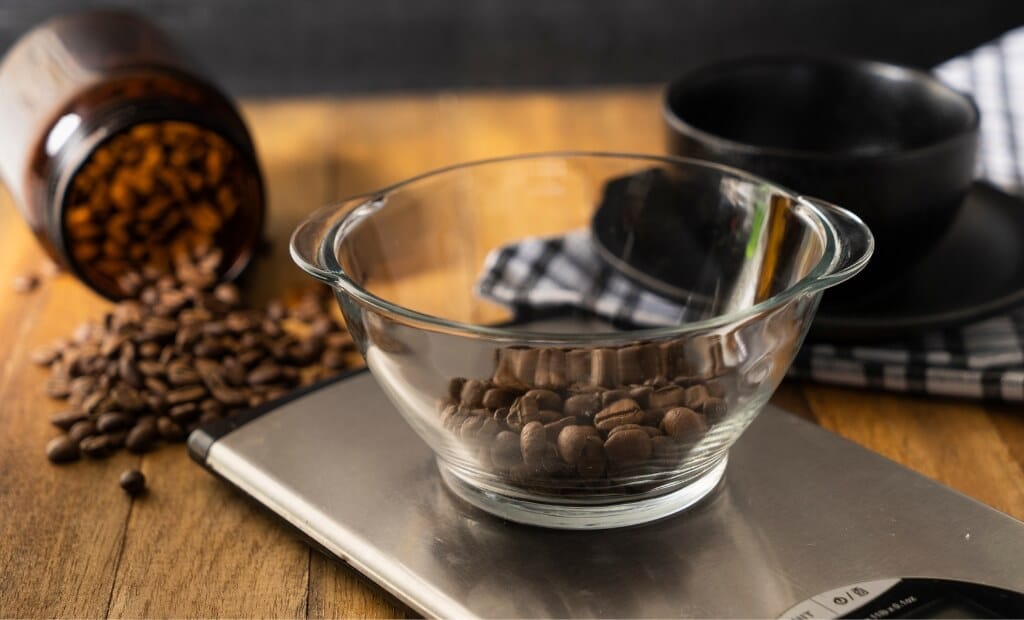
I can’t recommend enough how essential it is to buy a scale if you want to make a tasty cup of coffee. Without one, there’s no good way to repeat that amazing French Press you brewed last Tuesday morning before work.
You might be thinking, “Can’t I just measure coffee grounds using scoops?” Sure you can! You do you!
But, you will not make a consistent cup of French Press coffee this way.
Using weight units over volume units gives you the ability to perfectly measure out your ground coffee and water. Scales are cheap, and you can use them for cooking too!
The best way to measure your French Press coffee ratio is by using your scale in grams. Weigh out 25-40 grams of coffee, grind your beans, and put them in the French Press. Tare your scale, then pour 400 grams of water (which is also 400 mL of water) over the grounds.
Which Grind Size is Ideal for a French Press Coffee Maker?
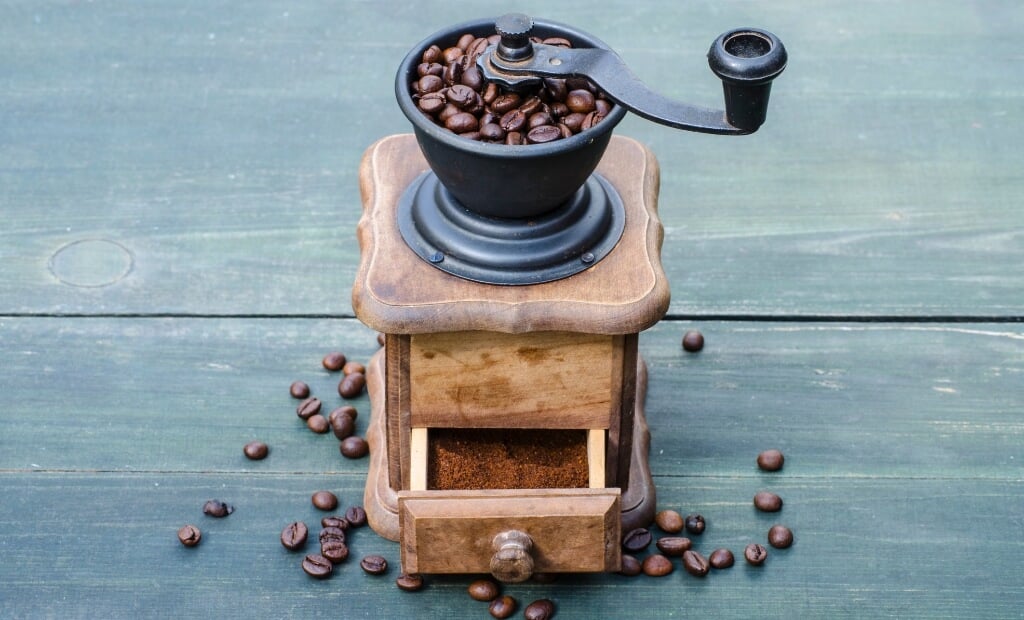
There is a lot of debate in the coffee world over the ideal grind size for a French Press.
To keep things simple, use a relatively coarse grind size. Since the French Press is an immersion style of brew method, this means that the water stays in contact with the grounds for longer than other methods, such as a pour-over.
Since the water is extracting the ground coffee for a longer amount of time, you don’t want to over-extract the coffee beans. By grinding your coffee courser, you reduce the surface area that is in contact with the water, allowing for more ideal extraction.
Of course, you can also experiment with a finer grind size by reducing the amount of time you let the water steep with the grounds. Making a great cup of coffee is all about experimentation!
The Perfect French Press Recipe
My personal favorite French Press recipe is simple and easy to follow, but still makes a kickass cup of coffee.
Ingredients:
- 30 grams of freshly ground coffee
- 400 grams of filtered water
Equipment Needed:
- French Press
- Digital scale with a timer
- Mug
- Burr grinder
- Kettle or stovetop
Step 1 - Grind the beans
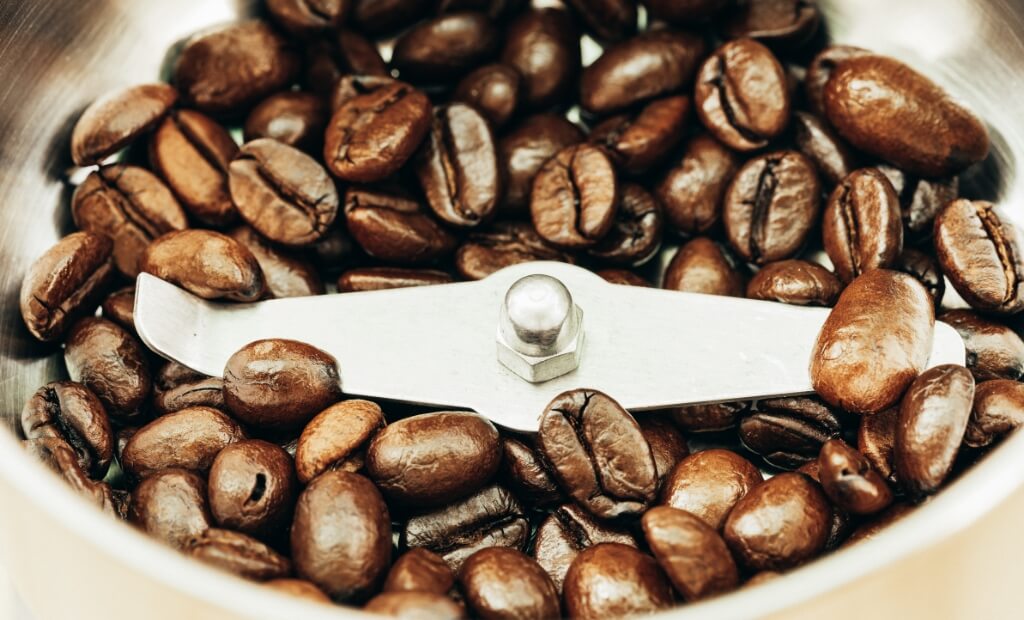
Measure out 30 grams of coffee and grind them using a manual or electric burr grinder. Make sure to use a relatively coarse grind size. Somewhere between a super coarse cold brew grind and a medium grind for pour-overs should be perfect. Place the grounds in the French Press.
Step 2 - Heat up some water
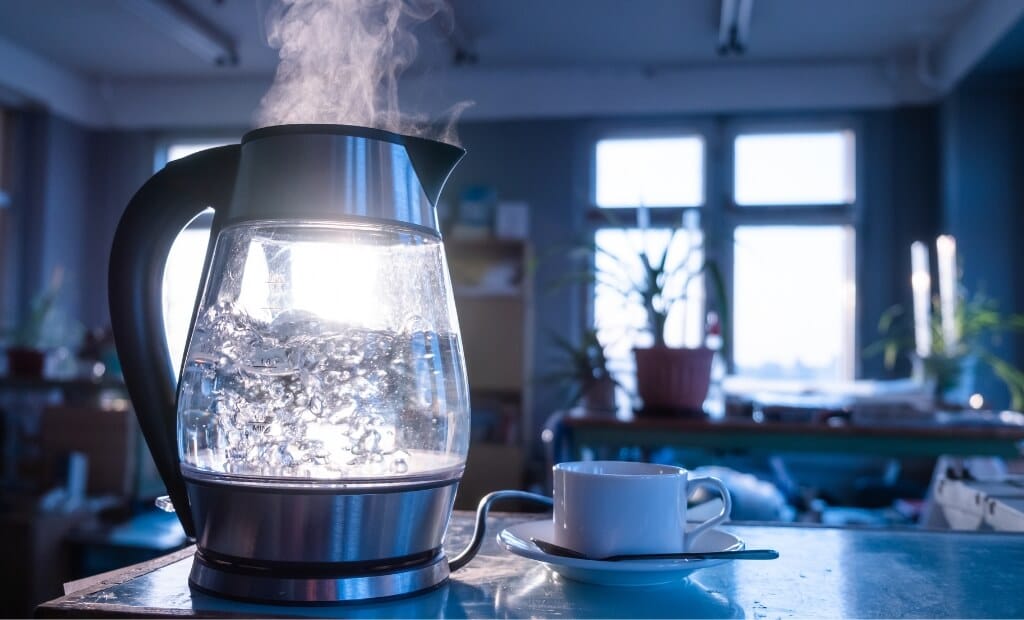
If you have a kettle with a temperature dial, set it to 205°F (96°C) and heat up 400 mL of water. If you don’t have a kettle, simply boil the water and let it sit without heat for 30 seconds before Step 3.
Step 3 - Bloom the coffee grounds
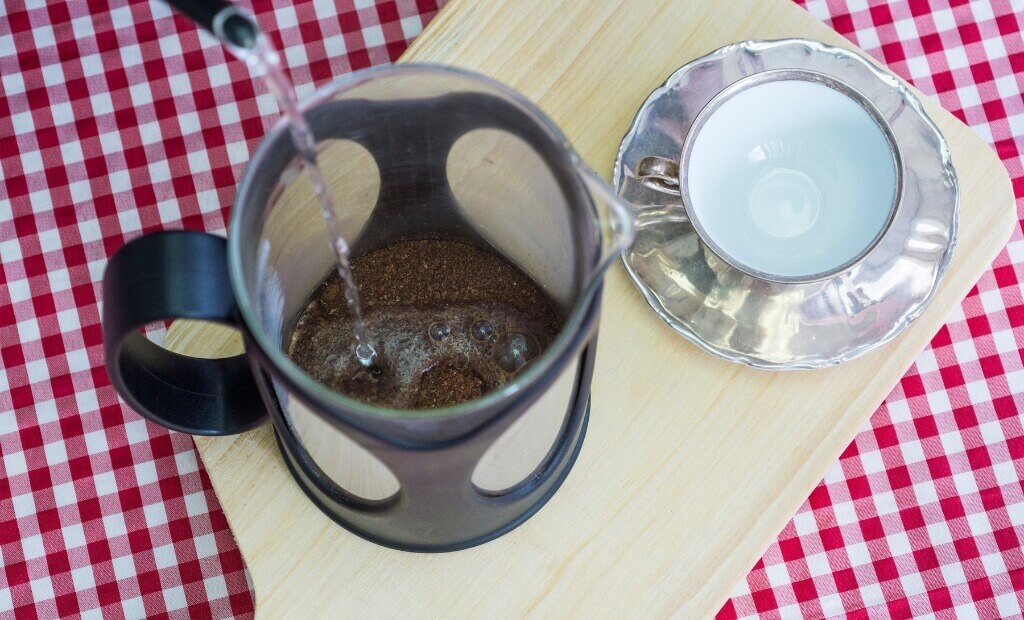
Tare the scale, start the timer, and pour approximately 60 grams (mL) of water over the ground coffee. No need to stir. Wait 30 seconds. This is called the “bloom” and lets excess carbon dioxide from the roast be released and the grounds get moistened evenly before further brewing.
Step 4 - Add the rest of the water
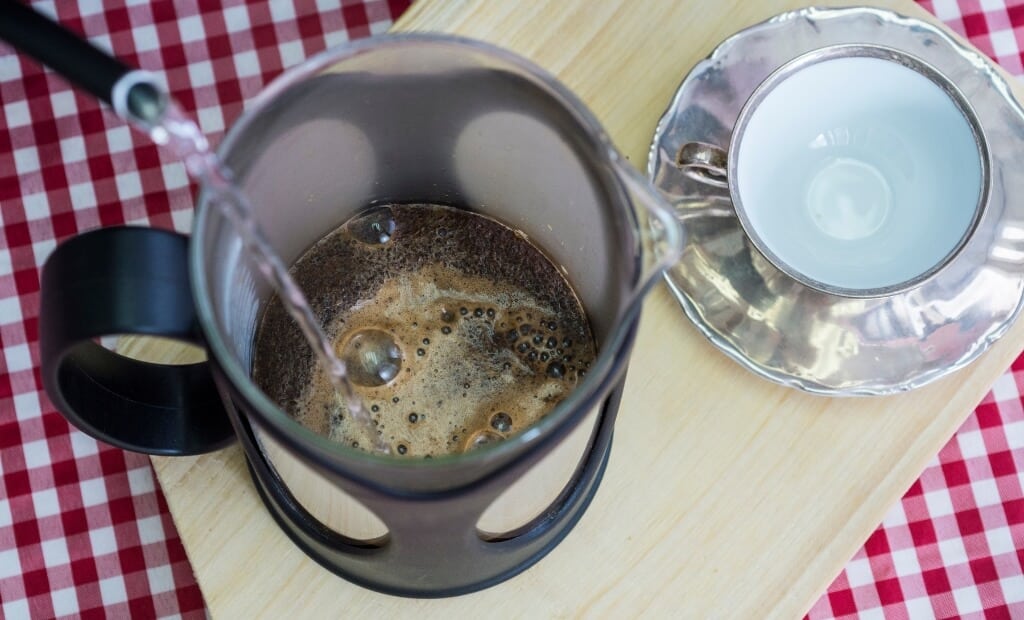
Pour in the additional 340 grams (mL) of water. Take a spoon and gently stir the brew three times. Put the plunger/lid on, but do not push the plunger down to the surface of the water. Wait until a total of 4 minutes have passed on the timer.
Step 5 - Plunge and serve
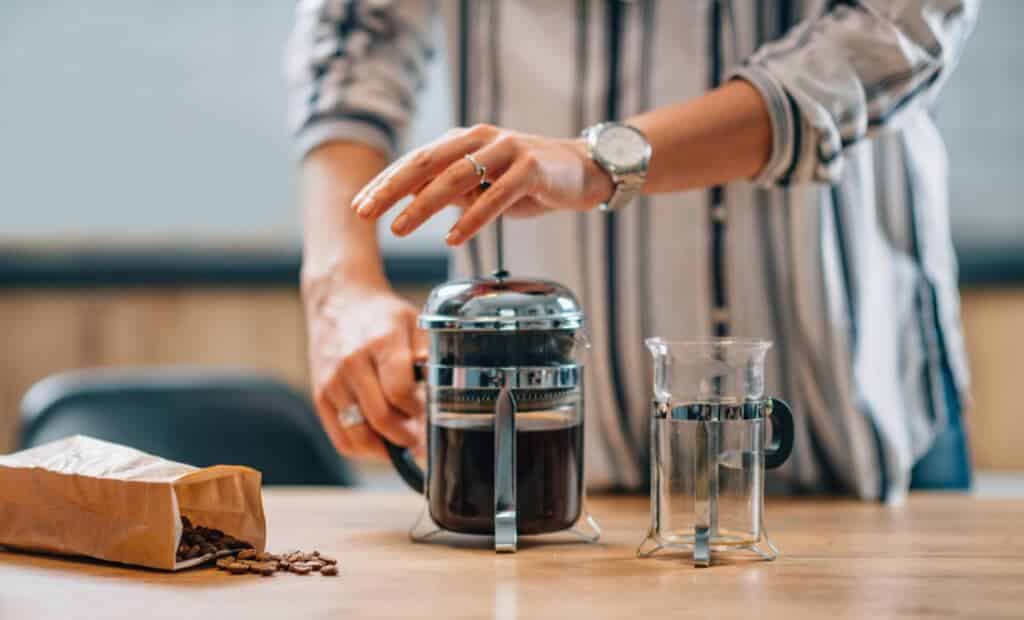
Once the timer reaches 4 minutes, slowly push the plunger down. Make sure not to push it down all the way to the bed of coffee grounds that have settled at the bottom of the French Press. Let it rest just above the grounds. Serve into a couple of mugs for two delicious cups of coffee, and enjoy!
Now, you are pretty much a professional in making French Press coffee.
Tips for a Delicious French Press Brew
Now that you know how to make a proper French Press brew, you may be looking to upgrade your final cup.
- If your coffee came out tasting a bit weak, acidic, or sour, try adding some time to your brew. Instead of 4 minutes, steep for 4 minutes and 30 seconds.
- If your coffee was too strong with a very bitter taste, try reducing the amount of time to 3 minutes and 30 seconds. I strongly recommend changing your total brew time before messing with the grind size. If the coffee still doesn’t taste how you want it to, try changing your grind size to help with a better extraction.
- If your coffee had loose grounds or flakes in it, try plunging more gently. Make sure to not push the plunger down into the bed of coffee grounds that forms at the bottom of the French Press.
- If your coffee didn't last as long, it’s worth investing in a French Press that’s made from glass and stainless steel to help with heat retention and durability. Picking a quality mesh filter is important, too. If the filter has too large of holes, leftover coffee grounds will escape through and ruin your morning brew!
The James Hoffman Technique
If you are a French Press coffee lover or even a general coffee fan, you may have heard of the coffee YouTube sensation, James Hoffman. He has a highly popular video boasting the “ultimate French Press coffee technique” (2).
Here’s what he recommends trying. Give it a shot and let us know how you think it compares to our recipe!
- 30 grams of coffee, medium-coarse grind using a burr grinder
- 500 mL of hot water
- No blooming, add all 500 mL at once, do not put the lid on
- Brew coffee for 4 minutes, then use a spoon to remove all the grounds on the surface
- Let coffee rest for another 5-8 minutes
- Push the plunger down only to the surface of the coffee
- Serve and enjoy your French Press coffee immediately
French Press Parts & Their Functionality
The French Press consists of several different parts with various functions. Here is what each part in the machine is called and what it does:
- Carafe: This is the main vessel of the French Press, usually made of glass sitting in a stainless steel structure. It holds the ground coffee and hot water during the brewing process.
- Plunger: The plunger on a French Press consists of a handle, a metal or mesh filter, and a circular plate at the bottom. Its primary function is to separate the brewed coffee from the grounds. By pressing down on the plunger, the filter pushes the coffee grounds to the bottom, allowing the coffee to be poured out.
- Filter Screen: Positioned at the bottom of the plunger, the filter screen prevents coffee grounds from entering the brewed coffee while allowing the natural oils and some sediment to pass through. It helps create the characteristic full-bodied flavor of French Press coffee.
- Lid: The lid sits atop the carafe and helps retain heat within the French Press during the brewing process. It also prevents any accidental spills when pouring the coffee.
- Spout: The spout is a small opening on the carafe that allows for controlled pouring of the brewed coffee into cups or mugs.
- Handle: The handle is typically attached to the carafe and provides a comfortable grip for pouring and handling the French Press without burning yourself.
Popular Posts:
- The Best Starbucks Coffee Beans for Home Brewing
- Fact or Fiction: Is Iced Coffee Illegal in Canada?
- Different Types of Coffee Roasts Explained in Detail
- Popular Types of Coffee – The Definitive Guide
Frequently Asked Questions
What is the ratio for 2 cups in a French Press?
The recommended coffee-to-water ratio for 2 cups in a French Press is around 1:13, meaning 1 part coffee to 13 parts water. For example, you would use about 30 grams of coffee for 2 cups (400 milliliters) of water when brewing coffee with a French Press.
Is the French Press coffee to water ratio the same as drip coffee?
The French Press coffee-to-water ratio is generally higher than that of drip coffee. While drip coffee typically uses a ratio of 1:17 to 1:20 (1 part coffee to 17-20 parts water), the French Press often employs a ratio of 1:10 to 1:16, resulting in a stronger brew. Expect French Press coffee to have a heavier body than drip coffee.
Is the French Press French?
Despite its name, the French Press does not originate from France. The modern design of the French Press is attributed to two Italians, and it gained popularity in France in the 1950s. The name "French Press" is believed to have come from its association with France or from a much earlier brewing device invented in France that somewhat resembles a French Press.
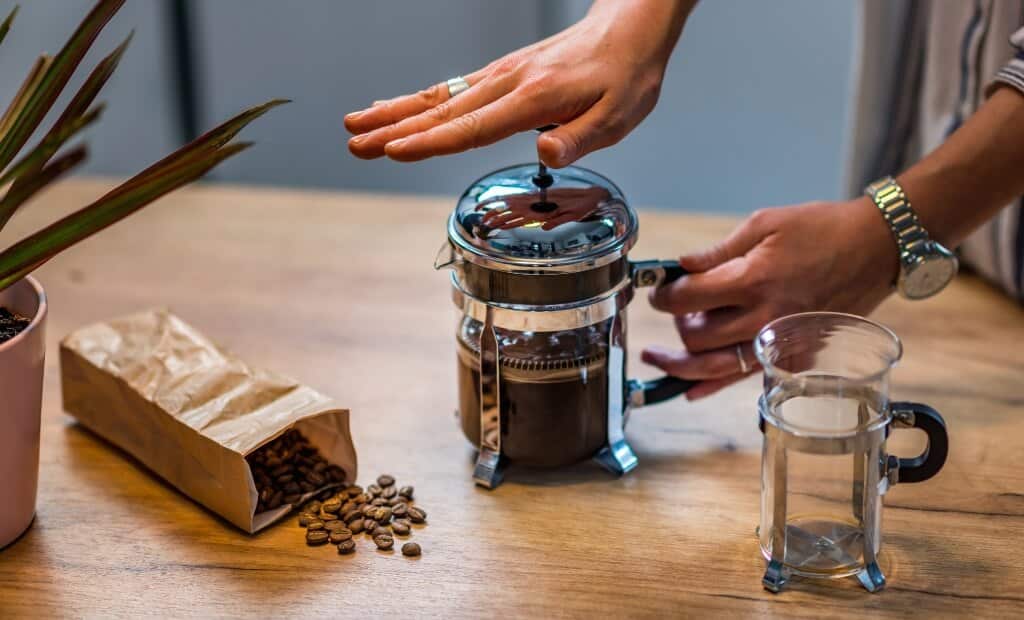
Bottom Line
There you have it! The best French Press coffee ratio along with our favorite recipe for making the perfect French Press coffee.
The French Press is a wonderfully simple coffee brewing method with several variables to affect the final cup. It’s great for beginners and experienced baristas alike, always making a full-bodied, rich coffee.
Happy brewing, and enjoy your French Press coffee!
This article is intended for informational purposes only. It is not meant to replace professional medical advice, treatment or diagnosis. Do not consume any type of coffee, tea or herbal infusion if you are allergic to it. The information in this article is not intended to treat serious medical conditions. Please seek professional medical advice before using home remedies.